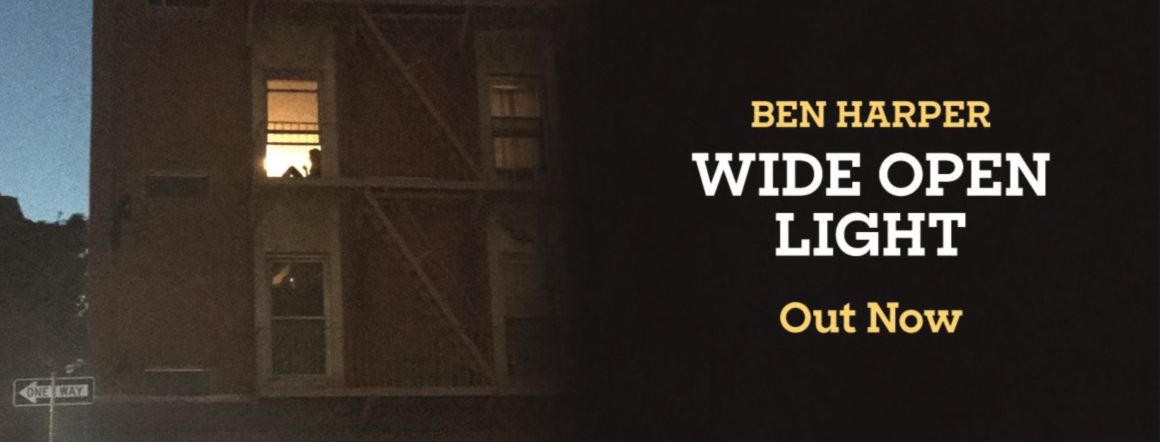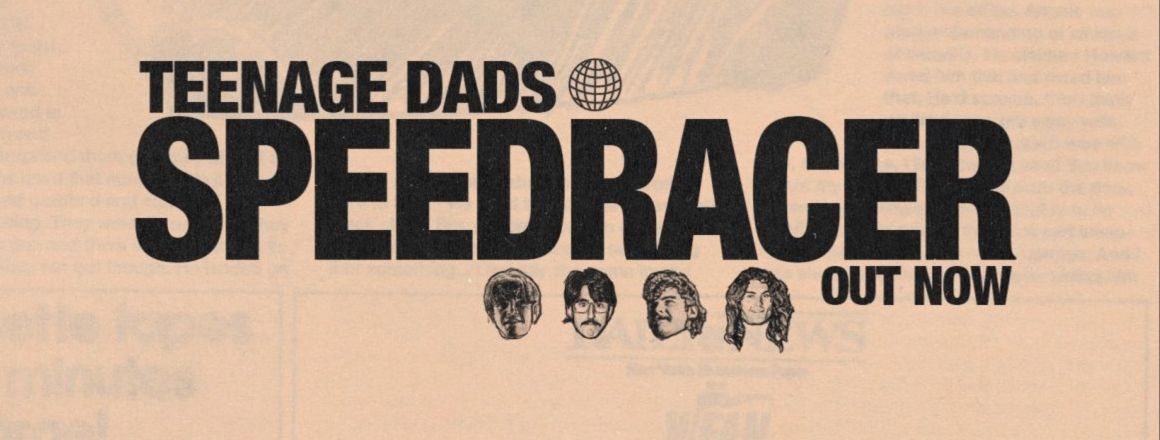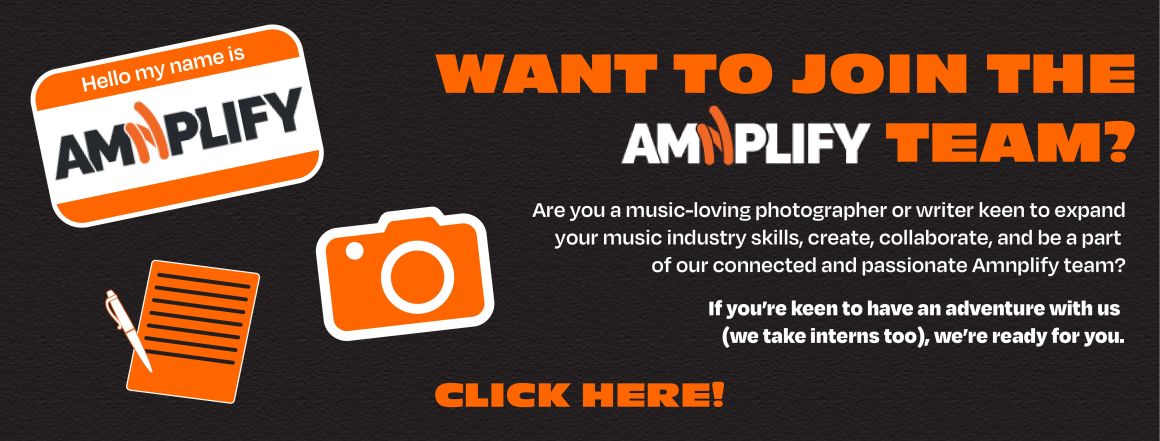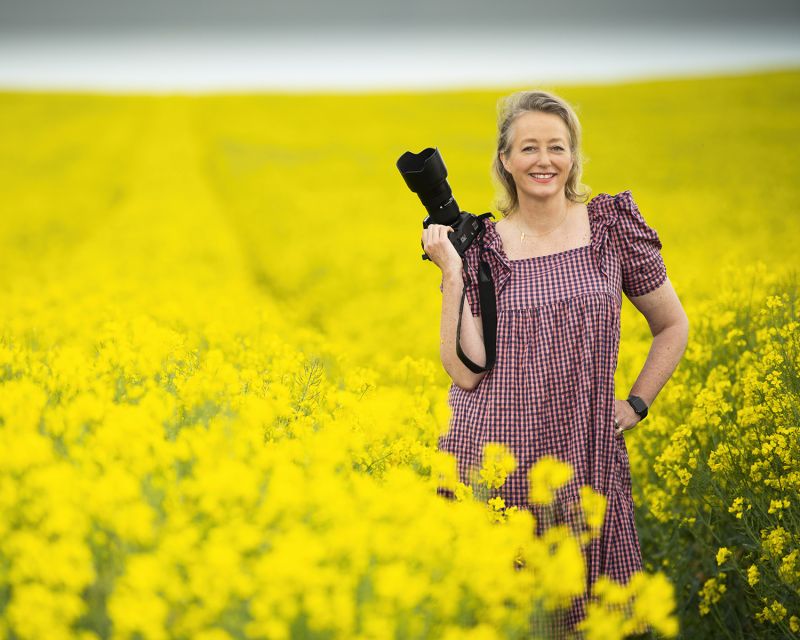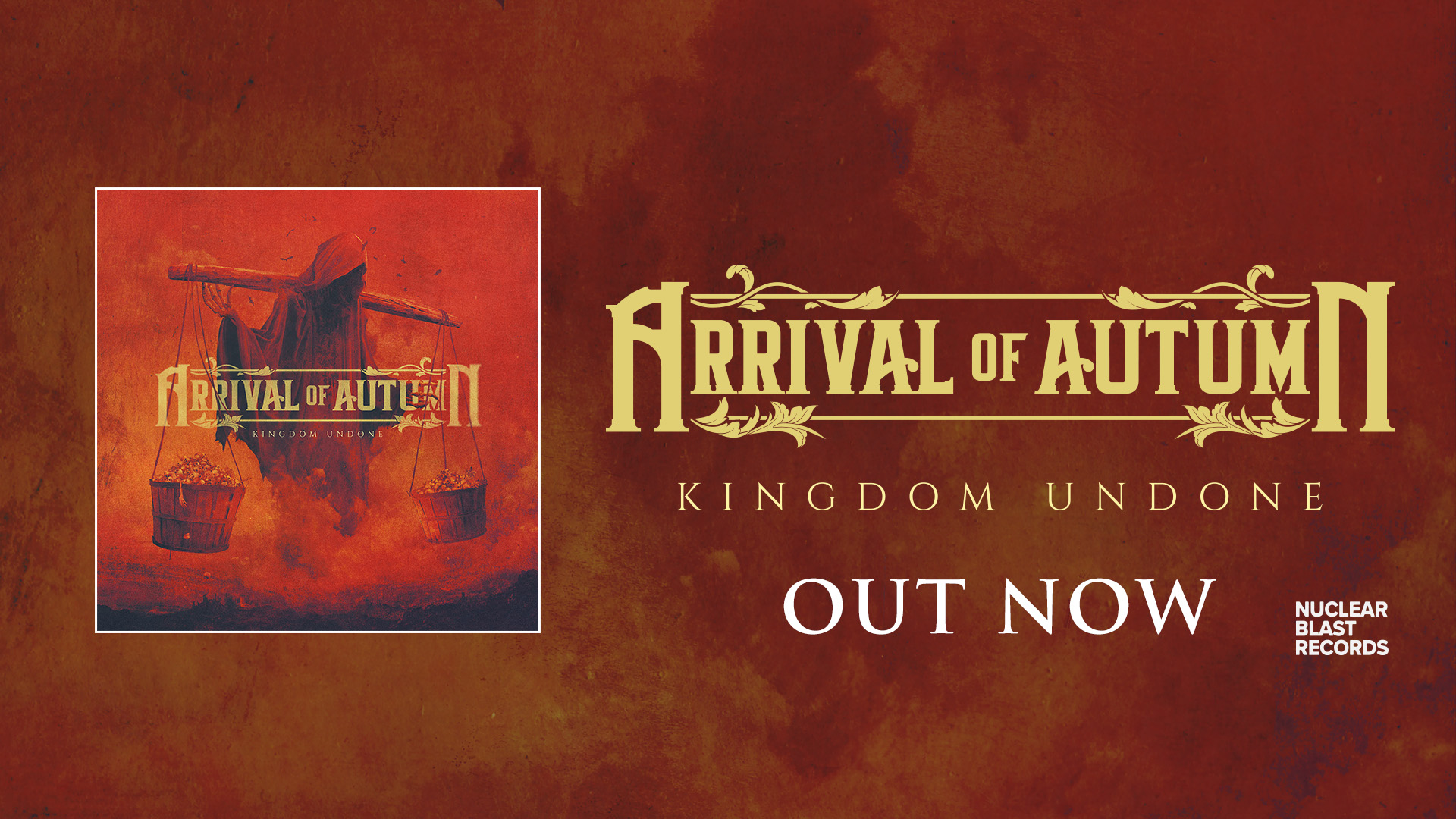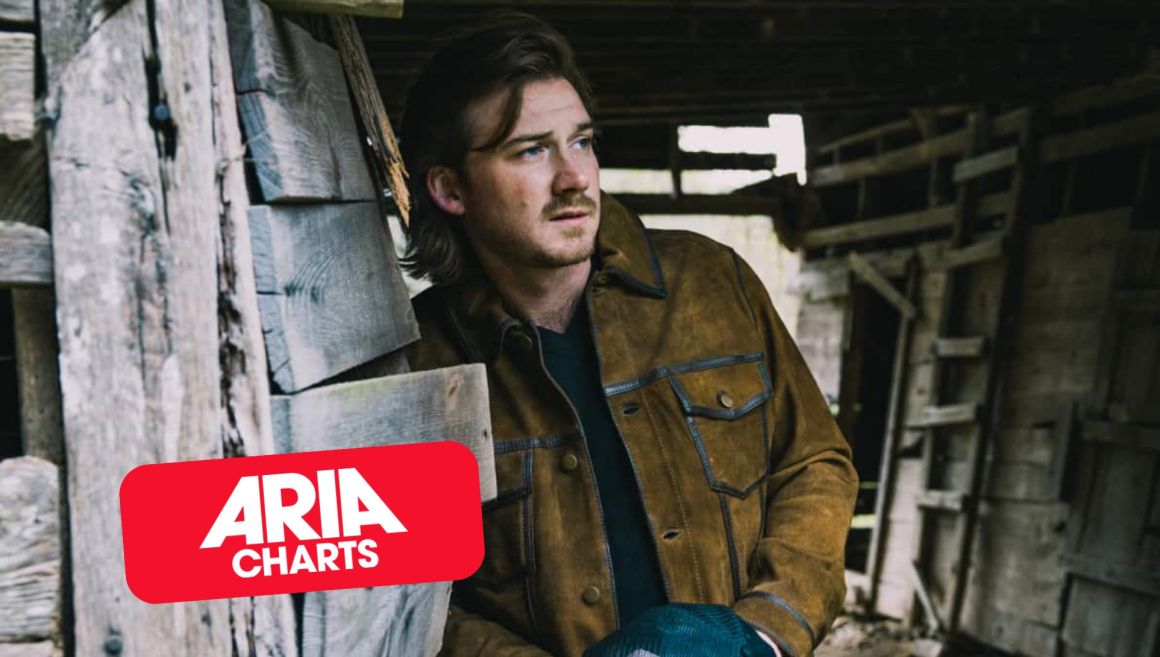Project Description
.
 .
.
.
Interview with
SCARLET PAGE
(Early May 2023)
Interview by Brittany Long
.
.
So let’s jump straight into it. How did the collaboration with Behind the Gallery come about?
I met up with Behind the Gallery in England, and we had a little meeting about the possibility of it coming together and we’d been talking for god, I don’t know, quite a few months actually now, but just getting the timing right when I could come over for a little stretch and that’s the thing you know, everything is printed here and then you’ve gotta sign and frame it and get it up. It’s just really nice to take the time actually, and do it this way. But, you know, they’ve been putting on some amazing exhibitions before and so I’ve been getting very excited watching all the developments.
Yeah I bet, it must be a really exciting process. How do you go about choosing the images that are going to be included? Obviously you have an impressive back catalogue and body of work spanning nearly 30 years.
Yeah and it’s a really hard decision, I’m terrible at making an edit anyway. So I’ve done a mixture of shots that i really love, and not everyone will know who they are, and then some that I know are well liked from my archive, and then what was important to me was to make it relevant, so I remembered quite early on when we were talking, that the first shot that I had published in print was actually taken in Australia, at the Big Day out when I was assisting, and it was of Chris Cornell and it ended up being the back cover of a music magazine in the UK, and that sort of started my own sort of freelance career rolling a little bit. Then I thought that’s quite nice to sort of mention that, but it was also good to sort of think, you know who else have I shot in Australia, and who are Australian, just to sort of add them in because it makes it a bit more interesting. I spent a year on the road with The Darkness and they were here up in the Blue Mountains filming a video for a song called “Love is Only a Feeling”, so I was like, well that can definitely go in because that was a great memory. I think we were here for about a week because we were travelling around. Then obviously Silverchair in really early days, and Nick Cave, Powderfinger. So yeah, it’s just quite fun to you know think what else can I show, because otherwise it’s so hard, so I thought those will be good ones to put in for sure.
Definitely, now we do need to talk about the Foofighters in a bathtub photo because that is a truly iconic shot. Can you tell me how that concept came about, and how it all came to fruition?
Yeah well, it was one of a few shoots that I had to get them to do ridiculous things. You know, that’s the thing, the magazine’s give you a brief that they don’t necessarily run past the bands so, there was one where they’d hired a hotel room and said ‘can you get the band looking like they’ve trashed the bedroom, so you know we want things fallen over, like lampshades on the floor, and can you get them like jumping on the bed. So, I must have taken like 40 shots where I was going like ‘1,2,3.. and they would jump in the air and land on the bed, or do like a football dive, and you know it’s just mad that now people would just do a photoshop version of it. So yeah, then the tub was a different shoot, that again, they hadn’t run it past the band. It was in Dublin, for a magazine called Q Magazine and they said ‘we’ve hired this suite at the Clarence Hotel, which was Bono from U2’s hotel and it’s like his own suite. When he comes off tour he sort of unwinds there for a bit of time before he goes back home. But it’s got like a one-man hot tub on the balcony and they said ‘there’s a hot tub, it’d be great if you know, you got the whole band in it, I was like ‘okay’, but then I didn’t realise it was a one-man tub and so when they arrived, they didn’t know what the concept was. So I was like, ‘the magazine really want you all in the hot tub, so they were all like ‘okay, so they just stripped off, pants, you know there were no swimmers, and they were just totally up for it, so I was like ‘okay’. We shot loads and they were very happy.
Yeah it’s definitely one of my favourites of the little sneak peek selection I was sent to view, i was drawn to it straightaway, because I was like ‘oh my goodness, how did you get the Foofighters in a hot tub’?
Yeah it’s a favourite of mine, and it was definitely something we sort of had to just hope would happen when they arrived, and yeah, they were game.
We love that. So tell me, why the exhibition title of ‘Captures’ Scarlet?
That’s another thing, it’s hard to make any kind of decision for me. One thing, that’s why I’ll never have a tattoo. I don’t think I could pin it down. But yeah, when I did the guitar project ‘Resonators’, I remember thinking ‘I’ve got to come up with a name’..strumming, riffs…and you know I’m a pictures person not a words person, and whenI finally thought ‘Oh Resonators, that’s good, it actually resonates.. And there is actually a guitar called a Resonator which I didn’t even know. But Captures, you know, I was sort of going around again and again, and I thought well let’s just keep it simple. You know, they are those moments, those milliseconds that are captured, and it’s you know, capturing the essence of who they are and I just thought, that works for me right now. It felt right.
Absolutely, and I believe with the book, the Resonators, you did a crowd-funding kickstarter. If you were to do something like that again would you go the self-fundraising route and do a kickstarter, or would you hope to go towards a publisher. Do you have any tips or advice for someone that’s wanting to do their own photobook? So for context, I’m also a live music photographer myself. I currently have a project that i’m doing called ‘Stairing Through the Lens’. I’m a photographer in a wheelchair, and I’m taking portraits of artists sitting on stairs at music venues and festivals across Australia, to raise awareness and start the conversation surrounding not just accessibility, but also inclusivity. I’m hoping to publish the project as a coffee-table book.
Did you say you’re in a wheelchair?
Yes.
One of my best friends, well she can’t photograph now, but she’d been photographing as long as me, she had a terrible horse riding accident actually. At the moment it’s not a possibility, but we’re looking at, you know, hopefully ways to get around her situation. But, yeah, that’s brilliant. Well done, you. That’s amazing! So sorry, back to the original question, because I started on Kickstarter. So, well, when I was doing Resonators, it was just my own project, like, you know, you and it’s a lot of work, as you know, like approaching all the people and managing it. And like when I was planning to come to America to do some of the American people, that was a gamble. But, you know, I’ve got to sort of give it a go. And I sort of made contact. And it’s quite funny with some of them. Like I’d make contact with Steve Jones from the Sex Pistols, and I’d say, ‘could you give me your address?’ I was trying to work it out logistically. And he’s like, ‘give it to you when you get here, like a pump. And I was like, fair enough, you know. But I was just trying to be organised and get it all together. But I think, and the first part of the project was, it was being exhibited as part of Teenage Cancer Trust Week of Concerts at the Royal Albert Hall, and all the images were signed by the artist and then put up for auction. So that was phase one, and then because it was such a, you know, I felt like I got a lot of amazing portraits and there was a designer that I knew very well, he was keen to put it in a book format and he’d worked a lot with someone called Anton Corbijn, who’s an amazing photographer. So I was like, oh my god, that would be a dream. So he wanted to do a bit of a black and white version and said you should do a Kickstarter and it’s a lot of work is what I’m saying.
Yeah you’re echoing what everyone has sort of said so far. Like I’m still just photographing portraits at the moment. I’ve got a, so my first concert that I ever photographed just from the audience, which was what made me fall in love with music photography, was Pink. And so, I’m trying to get her involved with it next year and if I can get her, I reckon I’ll call it edition one because that would be, you know, the full circle moment of where it all started to, you know, to then be able to photograph her. But yeah, there’s over 200 artists involved at the moment and the support for it has been amazing.
That sounds incredible. Yeah, I think, well, I’d like to do, I’m you know, planning to do a book. I still need to get all the material fully together, but I would prefer someone to go, you know, it never really works out like that. Yeah, it’d be nice if someone comes along and goes ‘yeah I’ll fund this project. But you know, all my projects have been self-funded, and self-produced. But, in an ideal world I’d love someone to come along, and offer to do it all, design it and stuff. But we’ll see, good luck with yours.
We have to do so much now as photographers, that isn’t just photography. That’s the challenge, you have to be an expert on so many things, but at the same time, don’t be afraid to get other people to help, and outsource.
Definitely, just as a side note, can you still buy resonators? Is there any way to get my hands on a copy?
Probably on ebay, but I have like literally three copies left, so I’ve put them on the website at a ridiculously high price because I don’t really want to sell them. If someone really wants it then they have to pay a fortune and I also gifted a lot of them to Teenage Cancer in America, and so they are in circulation, but someone’s got fed up with them haha.
.
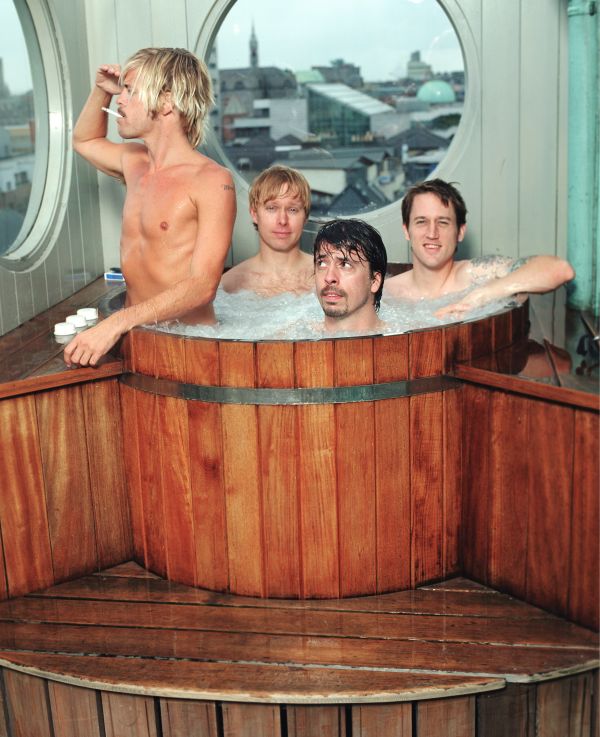
Foo Fighters / Photo – Scarlet Page
.
Now, I want to go way back to the beginning. Because you’ve had a pretty illustrious career, but I want to know where it all started. Where did your passion for photography begin, and how did everything with music photography specifically, originate?
Well, I always loved art more than anything else, and so after school I went and did a degree, no, it was a foundation course where you get to try a little bit of everything, and it was clear that fine art was not going to be my thing. But, as soon as we did the photography module I was like ‘this is amazing’, and I had a tutor, and he was doing a part time course at a uni in London, and he helped me gear my portfolio towards trying to get on that course. So I did that three year degree in photographic arts; photo, film and video and that was brilliant, you know, did all the usual cliches of like identity and all those things, but it was brilliant. Then I really had no idea what I wanted to do afterwards, but I suppose a few months before I graduated, just by chance I went to a shoot where there was a music photographer, and we got chatting and then I started assisting him. Obviously I knew what I was doing because I’d had quite a bit of experience at uni, I knew how to load film backs and medium format, so I started assisting him for a year. Then I started just making contacts, taking my own stuff, and it was at that point, that I shot, while I was assisting, and in Australia, that I shot the photo of Chris Cornell that made it onto the back cover of a magazine, and that sort of opened doors for me. So that was kind of like a nice parallel to being here now.
Wow, absolutely. Now would that apprenticeship have been with Ross Halfin?
Yeah it was, I was with him for a year in like ‘93 it was I think, so it’s a long time ago now. But yeah that was amazing, it was a time in the music business where there were a lot of budgets and I was literally flying all over the world. LA was like my second home, and Mexico and Japan, and everywhere, it was incredible. Some of the bands were more appealing to me, like I think one of the best gigs I ever saw was Pearl Jam in San Francisco in a tiny theater. I was like ‘oh my god, this is incredible’
That’s absolutely unreal. Now, do you have a defining moment, you know, where you knew that you wanted to make it a career? Like is there a particular shot, was it the Chris Cornell photo where you were like, I’m gonna make this my career? Or was that something before that?
Uh, it’s sort of weird. I don’t think, I just started doing it, and then I was doing it and doing it more, and then it just started rolling. And then, sort of the year after the Chris Cornell picture, I’d made some contacts by this point. So I decided to head out to America with some air miles that I’d got while I was assisting, and shot Lollapalooza Festival and had passes to shoot Beastie Boys and the Smashing Pumpkins. Then while I was there I met up with the Verve and took a picture of them in their bus, just, you know, just for me. And it ended up making it onto their album artwork, you know. They sort of slated it on a composite and sent it around everywhere and their manager saw it and said, oh, you know, we’d love to include that. I think the timing was everything, you know, it was really lucky. And unfortunately in the music business and photography world, I think, you know, there is always a bit of an element of luck being in the right place or asking, you know, or definitely meeting at the right time or approaching a magazine where they go, ‘actually, I do have a job that came in this morning’. You know? You can never stop doing that. Even now I’m like, you always have to work really hard. It’s not been easy, it’s been up and down. But just keep changing and evolving and learning and doing the best you can.
Absolutely. Now, what are some hurdles that you’ve faced on your career’s journey to get to where you are now and how have you overcome them to reach success?
Well I think it’s that thing of just you know, adapting and learning. It’s like I was saying, you know, we have to do so many more jobs now as a photographer, so you have to do social media, and you have to learn how to be a good editor, you know, retouching and, yeah, I’ve got like a print sale shop and, you know, marketing and all the things. And it can be really hard to do it all, you know, and I’m not a brilliant sort of copywriter, but you have to also be able to write blogs and Ugh. Yeah.
Even just captioning Instagram posts nowadays. I’m like, well, I got this great photo I want to share, but I don’t know what to caption it, so it just doesn’t get shared.
No. So you’ve gotta just put it out there. It’s always hard being a freelancer. You can never sort of just relax and you don’t know if you’re gonna get more commissions and Yeah. Especially when I had kids, that was quite hard because I think people wrote me off as like, ‘oh, she’s a mom now’. Like, I literally work harder than ever since I had kids. So, you know it’s what people think and yeah. But I’ve always just tried to be very professional and work hard and, you know, conscientious.
Yeah. Absolutely. Now, throughout your career, you just touched on it, how have you seen female representation evolve in the music industry?
Well, it’s funny coz I didn’t sort of think about it so much back then, but reflecting, you know, it was such a male dominated music business and all my commissions were to shoot men. It was very rare that I was shooting female bands and at some point I even sort of thought, ‘can I take nice pictures of of girls?, like I don’t even know, you know, I can make boys look pretty. You know, I sort of lost my confidence a little bit at some point, but definitely readdress that now. But yeah, people say, oh, you know, what were the challenges? How did you do itl? But I just, I didn’t sort of let anything hold me back. I thought, I always thought that I could and I just gave it a go, you know, to the best of my ability. So I think there’s definitely, you know, been magazines that are kind of like, a bit like a boys gang and so you wouldn’t always get commissions, but just don’t let it get you down. Just keep going, you know?
That’s definitely great advice. And you’ve also segued really well into my next question. So, as a fellow creative, have you ever experienced imposter syndrome and how have you overcome it?
God, all the time, like all the time. So I recently became a Nikon ambassador. I’ve been using Nikon my whole career, but as soon as I became an ambassador, and it was something I really wanted, I really wanted to have that affiliation. I wanted to feel their support and be connected moreso, and, you know, I’ve always been really passionate and, you know, that’s it, I’ve just always loved Nikon. Then as soon as I was asked, I just thought, ‘well they’re gonna find out quite soon that I’m not very good and I don’t know what I’m talking about’. And I’m like, ‘well, what’s going on, like, I may not be the most technical, but I’ve got a really long career and I’ve got some amazing pictures, so stop it. Like, you know, maybe my lighting isn’t as proficient as someone else, but it works for me’. And so that’s what I can share actually. And that’s what’s interesting. It’s like, well, I can just tell you or tell anyone how I’ve done it, and that can be inspiring. I think all different photographers do things differently, and that’s the beauty of it actually.
Absolutely. Yeah. The uniqueness of it and the fact that, you know, we can be at the same concert and shoot it so differently is the magic of it.
Totally. Or like, we could both be in the same room, and with five other photographers and there’s someone we have to take a portrait of, and we’ll all do it differently.
Exactly. Now, touching on your 30 year, incredible, you know, illustrious career, Obviously 2024 will mark 30 years of your career. Do you have any big celebrations planned or, you know, anything in the works?
No, but I think I’ve allowed myself, I’ve given myself permission to sort of do that book. So, I’m like, okay. You know, whereas before I might go, ‘no, it’s a bit showy offy, now I think, well, like, I’m entitled to do something like a collection and it sort of makes sense now.
Absolutely. Now obviously there’ve been a lot of career highlights, but do you have a particular few that you’d like to share that maybe you haven’t spoken about before?
Well, I suppose recent, well, it feels weird to say career highlight. I think an honour for me last year was, well becoming a Nikon ambassador. That was a really big honour for me. And also being asked by the Foos to do the Taylor Tribute concert was a massive honour. It was a really emotional and incredible event that I will never forget. So, that was, you know, pretty special. But you know, on reflection, it’s funny, there’s pictures that I took a long time ago that I now look at slightly differently. Like portraits of the Gallagher Brothers, you know, just recently, I was like, ‘God, I really love that’. Like, and at the time I remember taking the pictures and thinking, ‘oh, I’m glad I’ve shot the Gallaghers, but I didn’t think they were like the most amazing pictures’. But now I just look at them and think, ‘oh, I just love the way Noel’s face is all wonky and how beautiful he actually looks in this shot’. They just look quite classic and it’s iconic, you know, I don’t know.
.
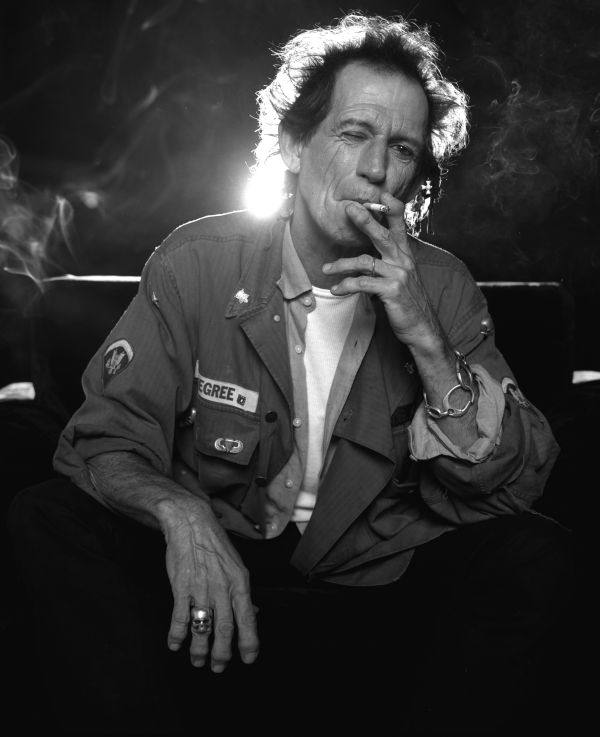
Keith Richards / Photo – Scarlet Page
.
I guess sometimes with that as well, it’s the story behind the photo sometimes. Like you said, you know, it doesn’t have to be technically perfect or, you know, like it mightn’t be the best lighting, but it’s the story behind the image and that sort of thing.
Well, the story behind that is this. Like red, red striped cans on the floor and cigarette butts. So actually it looked blooming amazing with the lighting, considering what the reality was in a corridor.
See, and here you were saying that you couldn’t do lighting.
Well, yeah, it made it look like a studio, and really it was far from that. So yeah, it works for me. That’s it. It’s not the best, but as long as it works for you, that’s all it needs to do.
Exactly. Now, is there a photo you wish you’d taken that you didn’t, you know, like a particular photo that you admire and or a photographer that you look up to and you’re like, ‘God I wish I’d taken that’?
Uh, God, there’s quite a few, I think. Well, there’s definitely people I’d love to photograph.
That was my next question, so feel free to segue into that one.
Well, I kind of got very close to shooting Prince and that didn’t happen. It was covering some of his concerts, but it wasn’t like a portrait session, but even that would’ve been like, a huge honour. And like I’ve always wanted to shoot like Courtney Love or, like even Madonna or Lady Gaga. I have shot Lady Gaga, but not really. It was more sort of fly on the wall and just a photo call. You know, before she was gonna perform, I had to get a few snaps. But people like that, that would really scare me, and I’d be like, you know, having to go to the loo like a million times before. But that sort of terrifies you and then you think, ‘ah, could I do it? Would I be able to get a great shot?’.
Now, obviously, you know, you definitely stand on your own merit with your photography work and everything, but, growing up with Jimmy Page as your father. How did that influence you? You know, did you ever feel overshadowed by him, or have any sort of pressure to be creative?
No. I certainly don’t think I ever felt any pressure. It’s weird because, you know, that is my normal, so I suppose I just, you know, I didn’t sort of analyse it particularly. I knew that I didn’t wanna be a musician, so that was lucky. And I knew that whenever I did shoots, I didn’t ever want people to know who my dad was, so I didn’t bring it up. So I think for me, I was always very determined to do things on my own. Obviously I think the only time that I presented myself with my family history or heritage, you know, was when I was doing the Resonators project it was sort of 2014. So already I’d been shooting for 20 years, and I was like, ‘I’m Scarlet and I’ve been shooting for 20 years, and this is my portfolio, I come from a musical background and I’m doing a project on guitarists’. So at that point, and that was the first time I kind of went, this is a bigger picture, but it was, you know, I, I luckily didn’t sort of dwell too much on anything or what I could and couldn’t.
Amazing. So, you know, if you weren’t a photographer, what would you be doing? Do you have any idea?
I can’t do anything else. There have been times when it’s been really crap and hard work where I’ve gone, ‘I need to get like an actual job’. And then I’m like, ‘I dunno what I could do’. I literally can’t do anything, I can’t do proper jobs. I don’t understand them. Like, ‘shall I work in the supermarket?’. Like, literally, there is nothing else. So luckily I have managed to carry on doing it, and I still shoot.
Yeah, definitely. That’s great. I mean, you know, the world is better off for having your talent in it.
Ah thanks.
No, I genuinely mean it. I’ve followed your work for a while, just sort of in the background, and when this interview arose, I jumped on it. I was like, ‘oh my God, I want it so bad’. If I was in Sydney and not Melbourne, I would’ve loved to have come and done it in person and, you know, come and seen the exhibition myself.
Well, hopefully there’ll be a Melbourne one at some point, maybe not this year but I’d love to do that.
Yes please do, I’d love that! Now, what do you look for in a live photograph? I believe there’s also a competition running, I’m not sure whether it runs alongside your exhibition or there’s sort of been a brief mention of a photography competition running. So what do you look for in a live photograph?
I suppose something that reaches me on a level, you know, that makes me feel something. So, it’s a connect, you know, and so something that just intrigues me. So I suppose there’s gotta be some energy maybe, or beauty. But yeah, there’s been some incredible entries oh my goodness. Like, I’ve been blown away. I whittled it down, and whittled it down to about 25. Like, there was just such a high calibre. Incredible.
That’s fantastic. And how important is it for you to foster the next generation of photographers?
Oh, I love, well, not only do I love working with new emerging musicians, but it is always brilliant to feel inspired by the photographers, the young photographers of the now. I get as much inspiration from them as, you know, as vice versa maybe. I don’t know, I’m not gonna say that I’m inspiring everyone. But I just love seeing like you know the trends and what people are doing, ‘like oh that’s interesting’.. But I think I’ve always wanted to, trends come and go, but I think I quite like that authenticity, you know of classic pictures, I’ve always tried to sort of not be too gimmicky. I like to try and get sort of the real shot at the time and yeah, I think just my authentic self.
.

Daniel Johns, Silverchair / Photo – Scarlet Page
.
I love that! How would you describe your style to someone who had never seen your work or, you know, even potentially a blind person who couldn’t see your work, but you were trying to describe it to them?
Well, I think I like to try and get behind. I try to get more than just a picture of someone. I try and get something that feels just that little bit more. So maybe just behind the photo face a little bit. So, yeah a connection of some sort.
Do you have any tips for establishing those connections? You know, obviously photo shoots can often be awkward and, you know, the musicians that you’re photographing might not like having their photo taken. Are there any tips that you have, or ways that you establish that connection to capture the essence rather than, like you said, you know, just a photo face?
I think I will also do this. Sometimes I’ll rush, you know, I’ll like take a picture and have a bit of a panic, like, you know, ‘Ooh, I’ve got it’, but I don’t know if I have got it. So I think I would always encourage people to shoot more than one set up, you know. So like, I’ve been trying to push myself to do a bit of street photography, and so if I approach someone and they say, ‘okay’, then I try to take more than just a few shots in one direction. Okay, let’s just be a bit more composed. Let’s just take a little bit more time. Just because actually on reflection, I quite often don’t know that I’ve got the shot or I’m sort of in this zone where I’m like, you know, just getting it, trying to get what I can. Then afterwards I go ‘oh yay, I did get it’ and actually ‘that’s really good’, and oh god look what was in the picture, that’s adding something, you know, which you don’t always see at the time. Even the composition, sometimes I think ‘god I did quite well with that, but I don’t always think about it. So I would always encourage everyone to shoot that little bit more. I’m mentoring someone at the moment actually, and she was like ‘sometimes I panic and I don’t take many’, and I’m like well ‘just make sure you take three points of view’, you know, just force yourself to take that extra time, and then you’re just gonna have a better choice later when you have to make the edit.
I think that’s definitely really great advice. I mean, I guess it’s even a similar thing where, you know, you might go to a concert and think you’ve taken the worst photos in the world, and then look at them the next day and you’re like, ‘hey, these aren’t as bad as I thought haha’.
I think if you dwelled on it like, ‘yeah, I got one’. I think sometimes, you know, like, ‘oh yeah, that happened, I got it or, I hope I did’. But, if you were just thinking like that all the time, you wouldn’t keep going, would you? You’d be like, ‘all right, I’ve got it’.
Now, is there anything you wish you’d known when you started? Or any advice that you have for, you know, people maybe just starting out or even those that have sort of reached a turning point in their career and might wanna pursue it from going from a hobbyist to a professional photographer as a career?
I think, it’s just the thing that I do and I enjoy doing, is just keep learning and just keep, you know, pushing yourself to grow and do the things that feel uncomfortable, because it’s only gonna make you a bigger, stronger person probably. And, you know, just keep pushing yourself even if it feels uncomfortable.
That’’s definitely great advice. Now, who are some photographers who inspire you personally?
Well, a huge inspiration all the way through has been like Anton Corbin. I love his work and he’s photographed a lot of people that I loved. Then I went to uni with someone called Peru, and he takes amazing pictures.There’s lots of people I follow on Instagram that I don’t necessarily know, but like I said, I’m just inspired by a lot of imagery. You know, I love pictures as well. But I think, like early Anna Leibovitz particularly and old Linda McCartney, you know, all the sort of classics, Neil Preston, like music photography, I’m thinking of old classic ones. But I just love going to see exhibitions as well, and yeah, anything Instagram. I love Instagram.
So, how do you feel about, you know, social media in the world of music photography? Obviously it’s been quite a conversation lately in terms of, you know, algorithms and people not seeing things and that sort of thing. Like how do you feel about it? You know, is there any advice for people who use it or maybe should use it differently? Or do you think it’s more so about just, you know, putting your work out there and you know, trying to get it seen?
Yeah, I don’t, I think someone was asking, my friend was asking if I get stressed if I don’t put stuff out there and I don’t. I don’t sort of give myself a hard time about constantly posting or, you know, I actually try and enjoy it. That’s the thing, sometimes you do a shoot and you get really excited and you’re like ‘I wanna put it out there’. So I don’t use it in the proper, proper way, you know, I haven’t got a master plan. So one annoying thing, but I try not to get annoyed about it, is that, you know, people repost your pictures everywhere and they don’t credit you. So I try, you know, I don’t mind people re-sharing my pictures, but it’s nice when they credit. It does annoy me a little bit when you think, yeah, that’s annoying and it doesn’t take much, you know, because basically I’m sharing my pictures. You know, all these people are sort of sharing them around, but it’s like, I think it’s rude when they don’t credit the photographers.
But it is though, it’s such an easy thing just to add an @ symbol or add a tag, and you’re like, why, why is it so hard?
I know, but at the end of the day, I’m not gonna let it wind me up because there’s more important things. But yeah, it does, you know, quite often some people will tag me and go, ‘this is yours, isn’t it?’ And I’ll go, ‘yes thanks for crediting’.
Yeah, you always put the little comment in, in the comments and you’re like, you know, ‘thanks so much for sharing, glad you love the photo’. And then suddenly they’ll be like, ‘oh, yep’. And then you’ll get a tag and you’re like, ‘see, wasn’t that hard’.
Haha, yeah like thanks.
Now, are there any memorable backstage stories surrounding any of the photos in the exhibition or, you know, one that sort of sticks in your mind and is the first one that comes to your mind? Doesn’t even have to be a photo included in the exhibition, but just in general, like, particularly backstage moments.
Yeah, I feel like, maybe the Nine Inch Nails one there. I was doing some fly on the wall stuff and you know, they don’t love having their photograph taken, but I’d done some shots of Trent Reznor, and then said ‘can I take some backstage before you go on?’ And they were getting ready to go on stage and they looked like they’d had a sort of talcum powder party and they were just all being like themselves. But you know, when I started taking some pictures, Trent was very like, ‘look serious, everyone’. And so I like the way it just became the ‘look serious shot’, and they do look seriously covered in talcum powder.
Well white powder has a lot of meanings these days, doesn’t it?
Yeah Danny from the band got in contact and we were having a bit of a laugh about white powders.
.
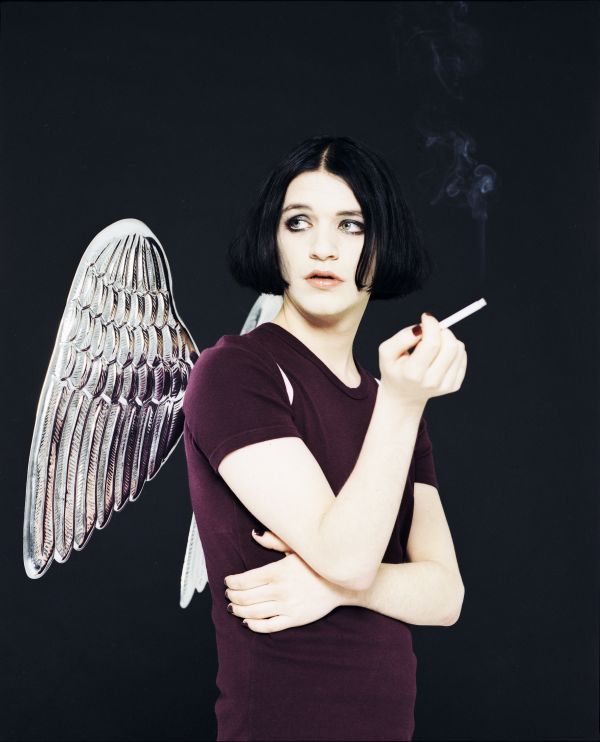
Brian Moko – Placebo / Photo – Scarlet Page
.
That’s wonderful. Now I usually do a segment called fan favourites in a minute. So basically I’m just gonna fire a couple of things at you in terms of what your favourites are, and you just give me the first thing that comes to mind.
Oh, this is my worst nightmare. I can’t, like if you said what tattoo, like I would never, because I can’t decide. I’ll do my best.
Just give me the first thing that comes to mind.
Favourite ice cream: Chocolate
Favourite song: Last Goodbye, Jeff Buckley
Favourite movie: Night of the Hunter.
Favourite artist. Doesn’t have to be photographic or illustrative, just in general.David Hockney
Favourite Disney movie: Snow White
CD vs vinyl: Vinyl
Okay. Beautiful. That’s my fan favourites in a minute.
Phew, Okay.I was on edge. You could tell.
And a special one for you, favourite photograph?
That I’ve taken or anything?
Taken? I know it’s gonna be like picking your favourite child.
It is, you know that.
I do, I really do.
Today, I’ll say the Gallagher Brothers.
Beautiful. Now, Is there anything, obviously you do a lot of interviews so is there anything you wish someone would ask you that you’d like to answer?
I can’t think of anything actually, you’ve asked some amazing questions. A real sort of variety and, it’s been really interesting, so I can’t think that something’s missing.
Thankyou. Well, we might just do a final plug for the exhibition then. So when does the exhibition open?
It opens on Thursday.
And how long is it running for?
Until Sunday.Yeah you’ve gotta be quick or you’ll miss it.
Oh wow, I didn’t realise it was such a short showing.
Wow. And how many photos are there overall in the exhibition?
42. I think.
That’ll be 45 by Thursday I’m guessing, have you run out of wall space?
No, no, we’re good. We just hung it, but I made lots of little printouts so that I could work out how everything’s gonna sit.
That’s a brilliant idea.
Well, it’s the only way, like I can’t do it on a laptop. Gotta sort of do it properly and see it and sort of jiggle things around.
.
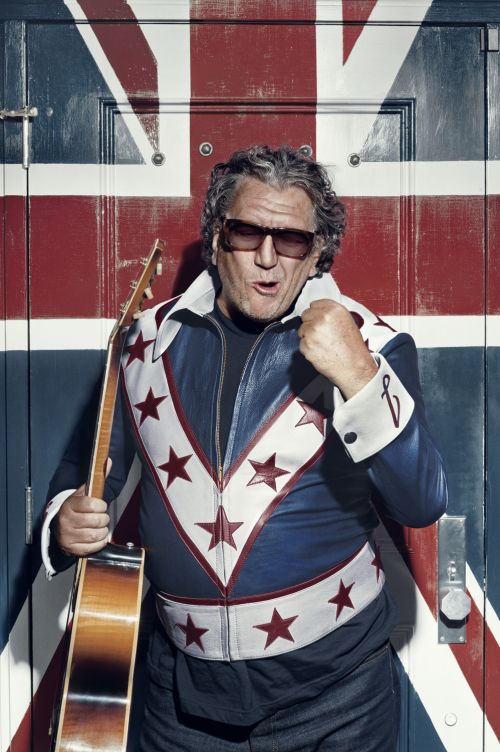
Resonators by Scarlet Page in aid of Teenage Cancer Trust London, Steve Jones
.
Was there a particular way, like when you were curating it onto the wall, like did you go, you know, from earliest work to most current? Or how did you work that out?
There’s 12 images from Resonators, and I grouped them together, but then the rest was just. I’ve actually got a new assistant that started working with me and she’s quite good at sort of you know, making decisions better than me. So I went, ‘well, these are the ones that I’m choosing, but how do you see it?’. And then she had this whole thing like, ‘well these are strong portraits and then you’ve got black and white and it flows to this’. And I was like, ‘what are you seeing here?’ But I was like, ‘yeah, if you say so, that works for me’. So yeah, I pretty much let her do it.
I love that. Now, I did actually notice quite a few on the wall behind you are in black and white. How do you, do you see a photo and know that it needs to be in black and white? Like, can you see that once you take it? Or how do you, how do you make the choice of choosing to put a photograph in black and white?
Well, you see most of those were shot on film and shot as black and white. But say, Gerard Way, he was a raw file, and then I made him black and white. But most of them are, most of them would’ve been shot as black and white. And actually all the Resonators are in colour here. There’s only a few that I’ve taken and changed.
What about like shooting today, like in the current digital world especially?
Well, sometimes if I think, ‘mm, it’s okay’. Sometimes changing it to black or white makes it better.
Yes, I feel that. Or if the lighting’s just really terrible and you’re like, ‘I can’t deal with that’.
It definitely helps.
Oh, well, amazing. Thank you so much for your time today. This has been amazing and I’ve loved hearing all about your journey and the exhibition and all your stories. Speaking of favourite shots. So on my Instagram, the photo in the middle of the three pinned ones is my favourite shot I’ve ever taken.
That’s incredible.
I was so, so lucky. I was at a festival in Daydream Island last year up in Queensland in Australia, and obviously being in the wheelchair, like I can stand and that sort of thing, but to get onto this stage, I had to be carried up, you know, one of those really, really tight little ladders with like, just little rungs. So they carried me up there and, you know, I was just shooting and, this was actually a DJ set, and this band is absolutely amazing, but he sort of climbed like where the DJ decks were and then just poured this can of beer all over his head and just shook himself out.
The glare of the light and everything, it’s just amazing.
It’s my favourite. It’s literally my favourite photo I’ve ever taken. And like you said, you know, right place, right time. Like I could have been in the pit and it would’ve been a whole different shot. But, you know, for me that that shot encapsulates everything I love about music photography, you know, the, the sweat, the atmosphere, the passion, the crowd below.
Well, exactly, you know, like you were saying, what would I be looking for in a live shot, well you’ve nailed it, you’ve got everything. It’s the perfect shot.
Thank you. Well, yeah, best of luck with your exhibition and thank you so much for your time. I’m really grateful that you took the time out to speak to me. I hope you have an exhibition in Melbourne, I’ll definitely keep my eye out and happy 30th early birthday celebrations for next year for your career.
Thankyou. And keep me updated with you know, the progress of your project and everything.
I definitely will. Thank you so much Scarlet. So lovely to connect with you.
You take care. Hope to see you soon.
.

Artwork – @madoldcatladyofficial
.
Follow SCARLET PAGE
Website – Instagram – Facebook
.


